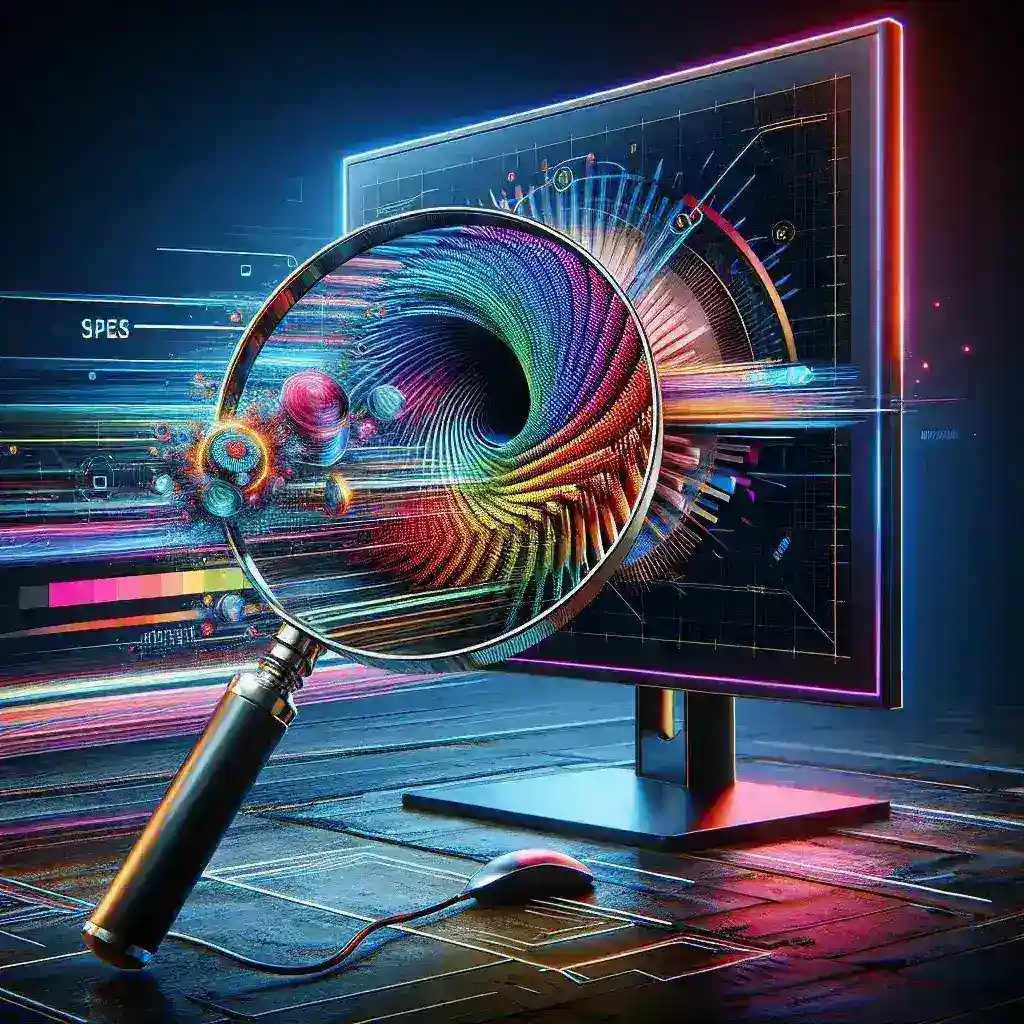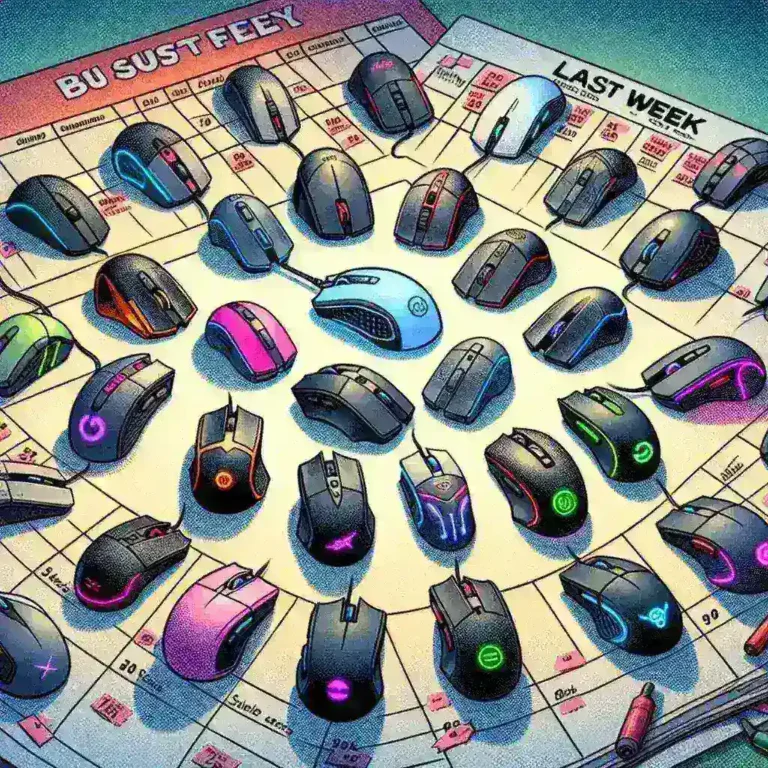Introduction to Monitor Refresh Rates
In today’s tech-driven world, the quality of the display on your monitor can significantly enhance or detract from your overall computing experience. One crucial aspect of monitor performance is its refresh rate, which refers to how many times per second the screen updates its image. Understanding monitor refresh rates is essential whether you are a gamer, a professional, or someone who enjoys high-quality visuals. This article delves into the basics of refresh rates, their impact on various activities, and how to choose the best one for your needs.
What is a Monitor Refresh Rate?
The refresh rate of a monitor is measured in Hertz (Hz) and indicates the number of times the screen can redraw the image in one second. For example, a 60Hz monitor refreshes the image 60 times per second. Higher refresh rates result in smoother and more fluid motion, making them particularly beneficial for fast-paced activities like gaming, video editing, and watching action movies.
The Science Behind Refresh Rates
To grasp the concept fully, it’s helpful to understand the science behind refresh rates. When you watch a movie or play a game, the images you see are actually a series of still frames displayed in rapid succession. The human eye perceives these frames as continuous motion. A higher refresh rate allows the monitor to display more frames per second, reducing visual artifacts such as motion blur and stuttering.
Common Refresh Rates
- 60Hz: This is the most common refresh rate for monitors and is standard for most desktop displays. It is adequate for general use but can feel sluggish during fast-paced activities.
- 120Hz: A significant improvement over 60Hz, 120Hz monitors offer smoother visuals and are often used for 3D stereoscopic displays. They are also popular among casual gamers.
- 144Hz: This is the sweet spot for many competitive gamers. 144Hz provides a noticeable improvement in smoothness and responsiveness, making it ideal for fast-paced games.
- 240Hz: At the high end of the spectrum, 240Hz monitors deliver the ultimate in smooth motion and responsiveness. These are primarily designed for professional gaming and extreme multimedia experiences.
How Refresh Rates Impact Different Activities
Gaming
For gamers, the refresh rate is a critical factor that affects both performance and enjoyment. A higher refresh rate reduces input lag and makes the gameplay more responsive, giving you a competitive edge. In first-person shooters (FPS), racing, and real-time strategy (RTS) games, the difference between a 60Hz and 144Hz monitor can be stark. The smoother visuals help you react faster to in-game events, while reduced motion blur ensures that fast-moving objects remain clear and distinct.
Video Editing and Production
Professionals in the video editing and production industry also benefit from higher refresh rates. Video editors working with high-frame-rate footage can see a more accurate representation of their work on a 120Hz or 144Hz monitor. This helps in making precise adjustments and ensures that the final product looks polished and professional. Additionally, a higher refresh rate enhances the overall user experience by making the interface more responsive and fluid.
Film and Television Viewing
If you enjoy watching films and television shows, a monitor with a higher refresh rate can elevate your viewing experience. Action movies, sports broadcasts, and fast-paced TV series benefit from the increased frame rate, providing a more immersive and engaging visual experience. However, for slower-paced content like dramas or documentaries, the difference may not be as noticeable.
Productivity and General Use
For everyday tasks like web browsing, document editing, and streaming media, a 60Hz monitor is typically sufficient. However, if you spend long hours in front of the screen, a higher refresh rate can reduce eye strain and improve comfort. The smoother transitions and more fluid animations contribute to a more pleasant and efficient work environment.
Choosing the Right Refresh Rate
Your Use Case
The first step in selecting the right refresh rate is to consider your primary use case. If you are a hardcore gamer, investing in a 144Hz or 240Hz monitor is highly recommended. For video editors and content creators, a 120Hz or 144Hz monitor will provide the best balance of performance and value. For general users, a 60Hz monitor is usually sufficient, but a 120Hz model can still offer benefits if you can afford it.
Graphics Card Compatibility
Before purchasing a high-refresh-rate monitor, ensure that your graphics card can support it. High refresh rates require powerful hardware to generate and display the necessary number of frames per second. Check your graphics card’s specifications to see if it can handle the desired refresh rate. NVIDIA and AMD have specific technologies like G-SYNC and FreeSync that help synchronize the refresh rate with the graphics card output, further enhancing performance.
Budget Considerations
High-refresh-rate monitors can be more expensive than their 60Hz counterparts. Set a budget that aligns with your needs and evaluate the trade-offs. While a 240Hz monitor offers the best performance, a 144Hz model can still provide a significant improvement at a lower cost. Consider the type of content you consume and the level of smoothness you desire to make an informed decision.
Technologies to Complement High Refresh Rates
G-SYNC and FreeSync
NVIDIA’s G-SYNC and AMD’s FreeSync are adaptive sync technologies that dynamically adjust the monitor’s refresh rate to match the frame rate output by the graphics card. This synchronization eliminates screen tearing and reduces input lag, providing a more seamless and enjoyable experience. G-SYNC is generally considered superior but comes at a higher cost, while FreeSync is a more affordable alternative that works well with compatible AMD GPUs.
VRR (Variable Refresh Rate)
Variable Refresh Rate (VRR) is another technology that complements high refresh rates. VRR adjusts the refresh rate of the display based on the frame rate being produced by the graphics card. This prevents screen tearing and ensures that the image remains stable and clear, even during intense gaming sessions or when rendering complex graphics. Many modern monitors come with VRR support, making them a great choice for users who want the best of both worlds.
Real-World Examples and User Experiences
Gaming Performance
Professional gamers often cite the difference in performance between a 60Hz and a 144Hz monitor. In a study conducted by the Professional Esports Association (PEA), players reported a 20% increase in reaction time and accuracy when using a 144Hz monitor compared to a 60Hz model. This improvement is due to the smoother motion and reduced input lag, which allows players to make split-second decisions more effectively.
Video Editing Workflow
For video editors, the impact of a high refresh rate is equally significant. In a survey of professional video editors, 85% stated that a 120Hz monitor improved their workflow efficiency. The smoother playback of video clips and the ability to see more detailed movements helped them make better editing decisions and reduced the time spent on fine-tuning effects and transitions.
General User Comfort
A poll conducted by a leading tech review website found that users spending extended periods on a 120Hz monitor experienced a 30% reduction in eye strain compared to those using a 60Hz model. The smoother animations and transitions contribute to a more comfortable viewing experience, especially for tasks that involve scrolling through documents or navigating complex interfaces.
Future Trends in Monitor Refresh Rates
Advancements in Display Technology
The future of monitor refresh rates looks promising. Display manufacturers are continuously pushing the boundaries of performance, with some models now reaching 360Hz and beyond. These advancements are driven by improvements in panel technology, such as OLED and Mini LED, which allow for faster refresh rates and better color accuracy. As these technologies become more accessible, we can expect to see a wider range of high-refresh-rate monitors at various price points.
The Role of New Graphics Cards
The release of new graphics cards from NVIDIA and AMD is also contributing to the trend towards higher refresh rates. These cards are capable of producing more frames per second, making it easier to achieve and maintain high refresh rates. Additionally, they often come with advanced features like ray tracing and DLSS, which further enhance the visual experience on high-refresh-rate monitors.
4K and Beyond
As 4K resolution becomes more mainstream, the demand for high-refresh-rate monitors is likely to increase. 4K displays already require substantial processing power, and adding a high refresh rate can push the envelope even further. However, the combination of 4K resolution and a high refresh rate offers unparalleled clarity and smoothness, making it an attractive option for content creators and enthusiasts alike.
Conclusion
Monitor refresh rates are a vital consideration when choosing a display, especially for activities that benefit from smooth and responsive visuals. Whether you are a gamer, a video editor, or a general user, understanding the impact of refresh rates can help you make an informed decision and enhance your overall computing experience. With ongoing advancements in display and graphics technology, the future of high-refresh-rate monitors looks bright, offering even greater performance and accessibility.
By evaluating your use case, ensuring hardware compatibility, and considering your budget, you can find the perfect monitor to meet your needs. So, the next time you’re shopping for a display, pay close attention to the refresh rate and make the most of your technology investment.




